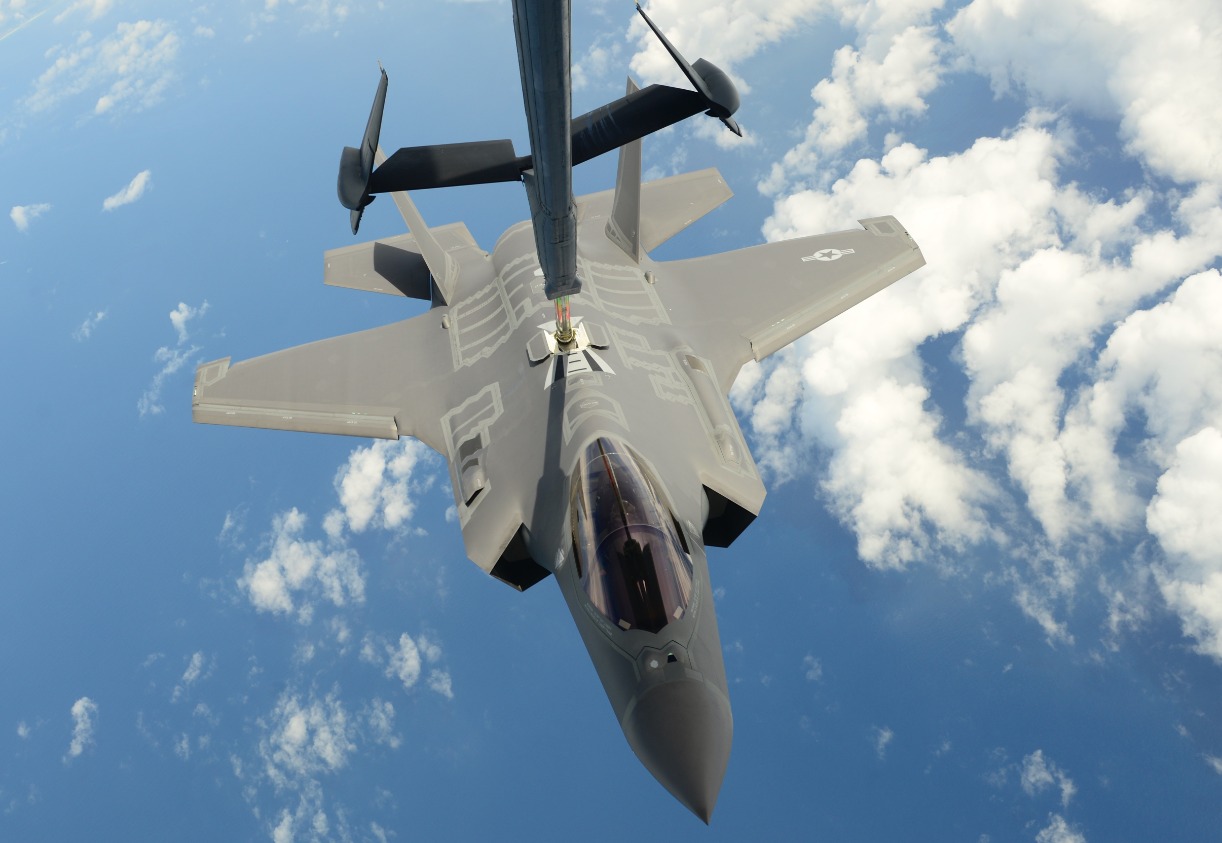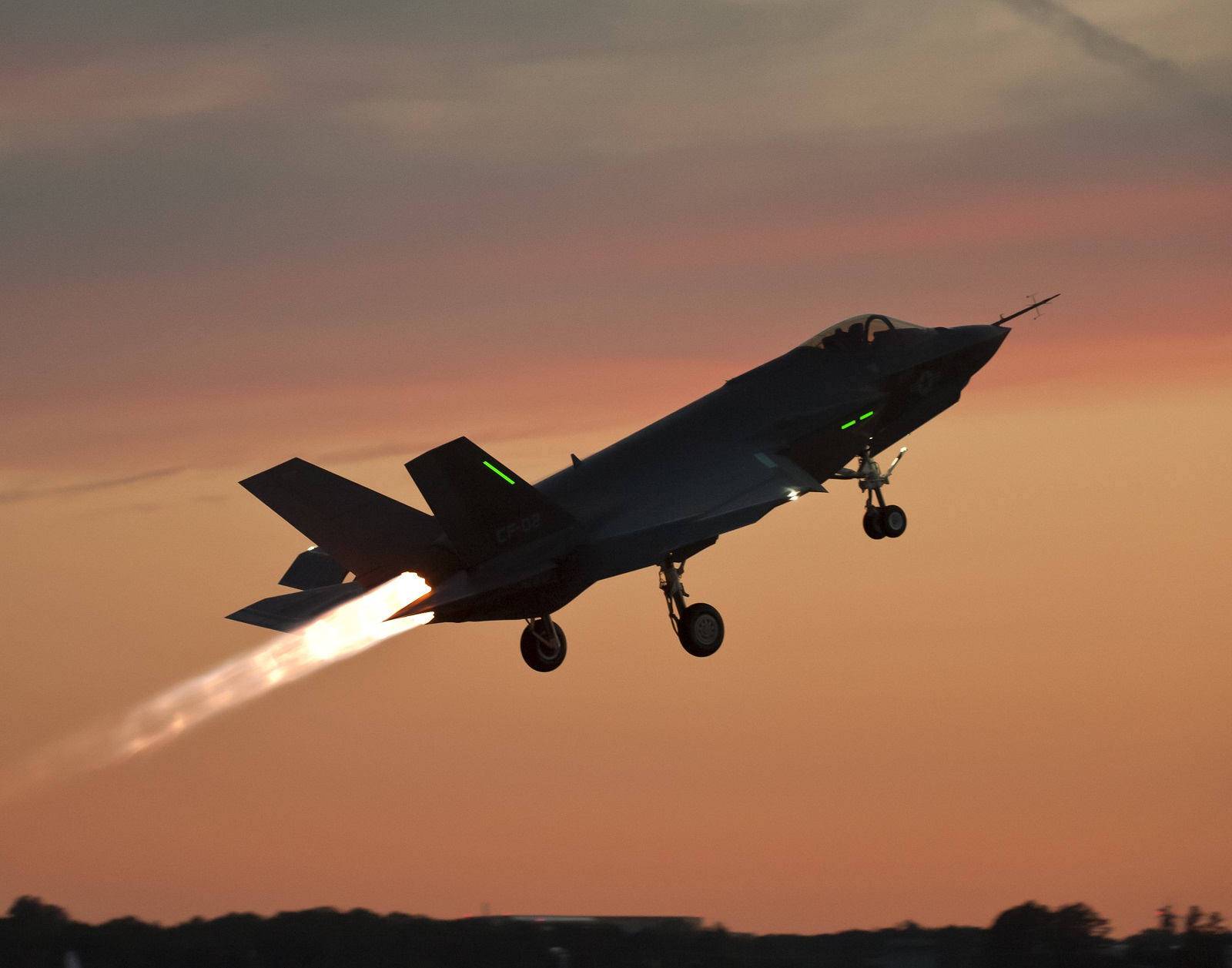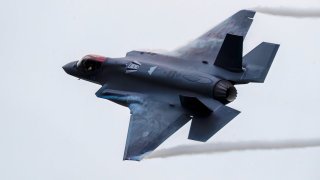The Navy's Plan to Arm the F-35 With Decoys Is All About Russia and China
The advanced decoys will make the F-35 more survivable in a potential future conflict with a near-peer adversary like China or Russia.
Summary and Key Points: The U.S. Navy aims to enhance the F-35 Lightning II's survivability with BriteCloud decoys to counter radar-guided missiles. The F-35, a stealthy 5th-generation multirole jet, is already equipped with advanced self-protection systems.

-The BriteCloud decoy will further protect the aircraft, making it more effective in potential conflicts against near-peer adversaries like China or Russia. The F-35 comes in three variants: the conventional F-35A, the STOVL F-35B, and the carrier-based F-35C, each designed for different takeoff and landing methods.
-The F-35 is renowned for its versatility in various missions and its ability to coordinate battlefield assets.
U.S. Navy Enhances F-35 Lightning II with Advanced BriteCloud Decoys
The U.S. Navy is looking to make the F-35 Lightning II, its most capable jet, even more effective with the addition of advanced decoys.
With the prospect of a conflict against China in the Indo-Pacific always at the back of the mind, the Navy wants to make its carrier-based F-35s more survivable in a near-peer operational environment.
To that effect, the Navy wants to buy active expendable BriteCloud decoys to increase the defensive countermeasures of its F-35C.
Manufactured and sold by Leonardo, the BriteCloud is an off-board decoy deployed by an aircraft to jam the digital radio frequency of incoming radar-guided anti-aircraft missiles and divert them. Using a flight-stabilized body and its active jammer, the BriteCloud creates a credible decoy aircraft, thus confusing the incoming munition.
Although the F-35 Lightning II is a stealth jet, enemy munitions could still lock into it and shoot it down. Its stealth capabilities just make it harder to do so, giving more time to the pilot to complete a mission.
The advanced decoys will make the F-35 more survivable in a potential future conflict with a near-peer adversary like China or Russia.
The aircraft already operates the ASQ-239 onboard self-protection system, and the BriteCloud will work in conjunction with that to further increase the jet’s defensive capabilities.
THE MOST ADVANCED MULTIROLE JET TODAY
The F-35 Lightning II is the most advanced jet in the skies today.
A 5th-generation multirole aircraft, the F-35 can perform a variety of missions. Indeed, the three versions of the F-35 can conduct Air Superiority, Close Air Support, Strategic Attack, Electronic Warfare, Intelligence, Surveillance, and Reconnaissance (ISR), Suppression of Enemy Air Defenses (SEAD), and Destruction of Enemy Air Defense (DEAD) missions.
The aircraft can also organize the battlespace around it. Through its advanced, interlinked sensors and radars, the F-35 Lightning II can communicate with other assets on the battlefield and guide them to targets, much like a quarterback would guide his teammates to victory.
The F-35 Lightning II comes in three versions: A, B, and C. In terms of capabilities, they are the same aircraft; where they differ is on how they take off and land.
The F-35A is the conventional aircraft that takes off and lands from runways. This is the most popular version of the stealth jet with the U.S. Air Force alone having ordered 1,763 aircraft.
The F-35B is the Short Take-Off, Vertical Landing (STOVL) iteration of the aircraft and can take off and land like a helicopter. Its STOVL capability allows it to operate from almost anywhere, making it a great expeditionary aircraft. This is the second most popular version; its biggest customers are the U.S. Marine Corps, Japan, Italy, and the United Kingdom.

Finally, the F-35C is the carrier version of the aircraft and is specifically designed to take off and land on aircraft carriers. It has a more robust superstructure and landing gear that can withstand the immense pressures of carrier operations. With only 340 F-35Cs sold, this is the least popular iteration – only the U.S. Navy and Marine Corps have purchased it.
Stavros Atlamazoglou is a Greek Army veteran (National service with 575th Marines Battalion and Army HQ). Johns Hopkins University. You will usually find him on the top of a mountain admiring the view and wondering how he got there.
This article was first published by Sandboxx News.


